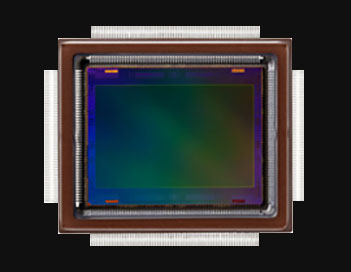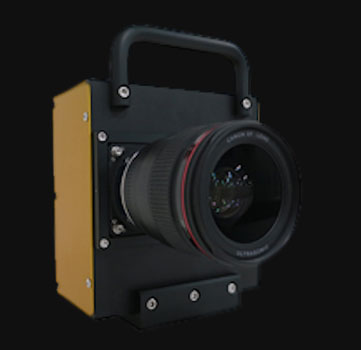SEARCH






|
|
|
|


No matter what kind of photography we are doing, we generally want our photos to be in high resolution. The question is how high is high enough?
The technological developments in this area are remarkable. Not long ago, high resolution cameras were clumsy and expensive devices. The advances in recent years have changed the way we take photos and what we expect of a photograph in general.
A new milestone was reached yesterday when Canon revealed that they have created a CMOS sensor incorporating approximately 250 million pixels. That allows photos to be taken in a resolution of 19580 x 12600 pixels. It's the world's highest number of pixels for a CMOS sensor smaller than the size of a 35 mm full-frame sensor.

250 MP CMOS sensor, © Canon.
The new sensor has so far only been tried out in a special prototype camera, customized for this purpose. With the new sensor, the camera managed to capture the lettering on the side of an airplane flying at a distance of 18 km away from the camera.

Prototype camera, © Canon.
This new technology is perhaps not intended for taking snapshots during family vacations. Instead, it's belived that this kind of ultra-high resolution can be used in surveillance and crime fighting. There are also several fields within industry and science were resolutions of this magnitude may prove useful.
 | Write |
 | Luca Fontana Now I'm using the Sony A7R (36MPX), I'm considering to buy the A7S (just 12MPX but great low light performance, as I need to make pictures in low light for my work).
MPX are a great stuff for marketing, but, I think 12MPX are enough for a standard usage.
Off course you shuld be more carefull when you shoot, because you can't cut so much.
A 250MPX camera is the best way to:
a) save monay with lens, because make the zoom concept unusefull (really? I think the creativity will lack a lot with this)
b) good way to think "I take a random foto, then something interesting will come out just cutting. "
So, for security or other tecnical purposes (maybe for astrography or other stuff) a so high resolution sensor could be interesting, but I think that for us, photographers of world, is not so usefull ;)
And, how does this sensor goes in low light? With a so high density of pixels, I think it will have problems... |
 | Pawel Majewski PRO Hi Thomas,
What about a camera with 3.2 GP ? It weighs more than 3 tons and one needs 1500 high definition tv screens to display one picture. For more reading please visit: http://www.symmetrymagazine.org/article/august-2015/construction-approved-for-worlds-most-powerful-digital-camera
Best regards
Pawel |
 | Thomas Brindt PRO 3.2 GP. That's not bad, Pawel. A bit heavy to carry in a strap around your neck though. |
 | Jeffrey C. Sink PRO So 120 megapixels - are we at the point of diminishing returns? I believe that is the case. Replace your computer, your monitor, your lenses and your credit cards because 120 megapixels are going to require incredible computing power just to convert raw images and an outlay of a lot of cash.
I am a sharpness freak, I admit it. I recently purchased the Zeiss Otis 55 mm lens to use on my Nikon D810 body. The cost was ridiculous, I mean come on - $3800 US dollars for a 55 mm non autofocus lens? My wife cut up all my credit cards after this purchase. So it is sharp - OMG yes. It blows away any other lens I have. It is even sharper than my Nikon 200 2.0 lens which is sharp. It's color rendition is beautiful. So maybe 120 megapixels would entice me to sell all my gear and go back to Canon but I don't think so. I believe that after 50 megapixels your lenses and your ability to process images will suffer. Hopefully Nikon will never offer such a beast because despite what I have just said I might buy it. Oh well. |
 | Thomas Brindt PRO Yes, Jeffrey. At the moment this kind of resolutions are only used for special purposes. But it's only a question of time before it becomes available for the consumer market as well. |
 | Thomas Vuillaume As said, it is not intended in any way for traditional photography. Well maybe in 20 years, it will be the standard... |
 | Thomas Vuillaume Damn Thomas, you have been faster than me as we replied simultaneously. |
 | Thomas Brindt PRO :-) People with such good names think alike. |
 | Pedro Jarque Krebs PRO wow! |
 | Thierry Dufour PRO Incredible and fantastic, Thomas thank you for this discovery and explanation, greetings !!! |
 | Thomas Brindt PRO Thanks Thierry! Yes, It's fascinating how fast technology is developing in this field. |